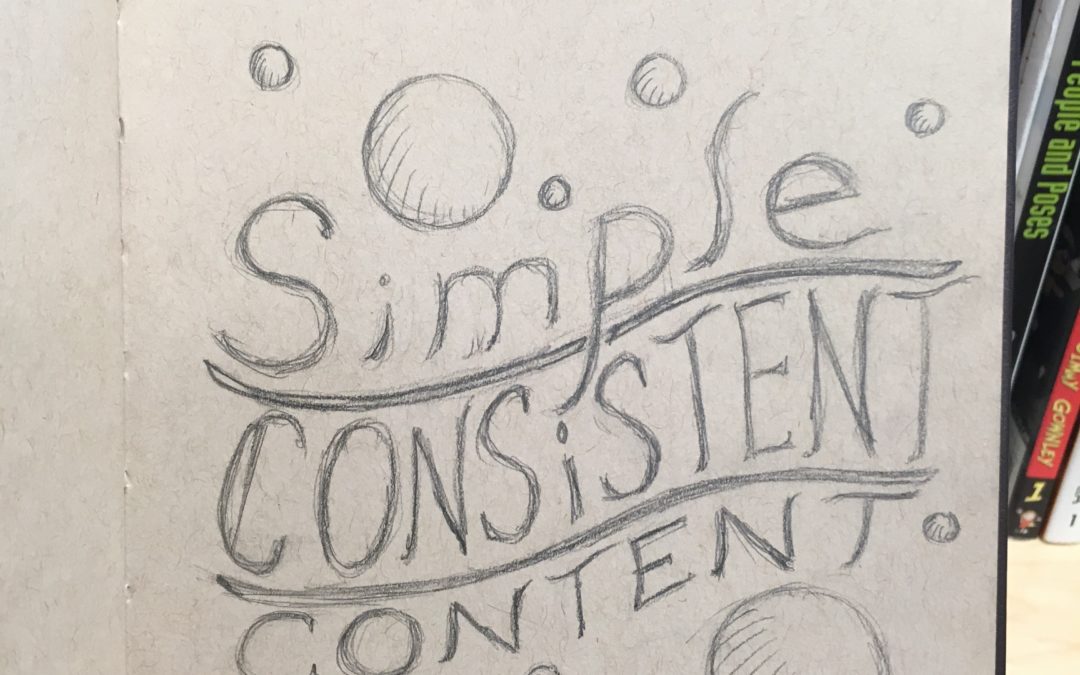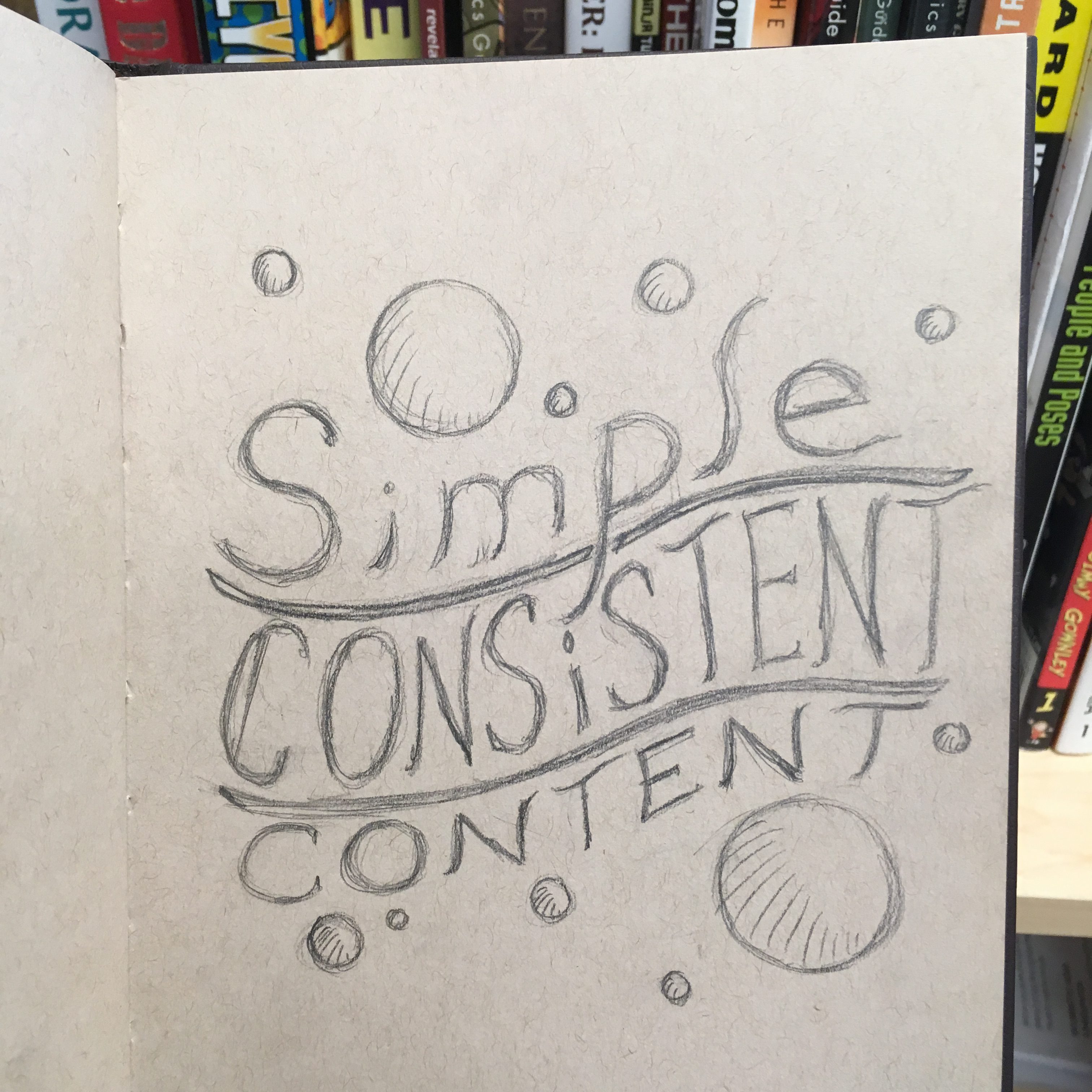
by Ydraw | Aug 21, 2018 | Marketing, Simple marketing, Video Marketing, video online marketing, Video Strategy Guide

“My Dad is cooler than yours!”
“Na uh, my Dad could beat up your Dad!”
“No way, my Dad can run faster than any one earth!”
“Oh yeah! My Dad is so strong that he can lift up a car!”
“Hey, Hey, that’s enough from you two…”
Do you remember when you were a little kid arguing about why one thing was better than another? It would go on and on, and after a while, the argument was no longer of benefit…it was just an argument for arguments sake.
This same problem often happens in our brand messaging. We want to prove every reason why our product is superior, but cramming every reason into your messaging loses the simplicity, and your target audience will get disinterested. Couple that with the long amount of time it takes to create that messaging, you are not only losing their attention, but you are rarely creating content.
How do we remedy this conundrum?
Simple. That’s it. Simple. Keep your Brand messaging simple.
If it’s easy to understand, it will stick with your audience. The next step is to keep creating and releasing that simplified content on a consistent basis. Once a week, two or three times a week. Whatever your goal is, if you have simple, easy to understand content, that is consistently getting in front of your audience, then you are going to have far greater success with your product.
Now how about a Simple Recap?
LONG-OVER-COMPLICATED MESSAGING + RARELY RELEASED CONTENT = BAD
SIMPLE MESSAGING + CONSISTENT CONTENT = GOOD
Got it!? Now give Ydraw a call. When you work with us, we’ll help you simplify your brand messaging, and start you on our system for releasing consistent content.

by Jace Vernon | Apr 22, 2016 | video, Writing a Script
How Can You Produce the Right Message and Get Magical Results?
Let’s talk scripting. How can you write a perfect script?
Simply put, no script=no video, bad script=bad video.
Over the years Ydraw has published (and will continue to publish) posts about script writing since the topic is so important and sometimes can be a hard one to truly grasp.
Your script is the framework or skeleton and life’s blood of a video that will deliver your core message to your audience and draw them in to learn more about you and your company.
I may be stating the obvious here, but everything else that is done with your video, from scene planning to art to voice over, follows and builds on your script. Unscripted delivery is called improv and that only works on stage or on the sales floor.
Whether you’re working with one of our creative directors/script writers or writing on your own, following the six guidelines in this article will save you time and frustration during the script writing process and help you create a perfect and effective script for your video.
1-Know Your Audience and Speak To Them..not At Them.
You have a product or service that will change peoples’ lives and the world deserves to know everything about it! Right?? Wrong!!
Let’s face it, your audience is priority #1 so before you start bullet-pointing all you have to offer, make sure you really understand who you’re trying to reach, put yourself in their shoes, and see how long you’d be willing to listen to your own message.
What is your audience dealing with, how can you help them, what will make them listen to you and why should they? If you were them, what would catch and keep your attention?
Create a fictional person or avatar. Know everything about him or her—write to connect with that “person”.
As a professional writer, whether I’m writing scripts, blogs, articles, screenplays or a full blown novel, I’ve noticed my best work is done when I put my ego aside and find a specific target or “person” to write to. It helps me write in a way that creates a much deeper connection with my audience as a whole.
In the article Script Writing 101: Know Your Audience, Ydraw Creative Director Linne Marsh goes into detail about how to identify your audience and how to gain trust and interest by showing that a product or service you have can “ease their pain”. She also warns against going off on tangents that could drive potential customers away.
2-Include Five Key Elements in Your Script:
These elements are your structure and must be included somewhere in your script, no matter what and no matter how. You can be creative and hint at or even combine some of the elements (your B-Problem can also be your A-Header depending on how you write it) but make sure you incorporate all five.
- A-Header: Have a powerful header or hook to draw your audience in.
- B-Problem: Clearly identify a problem your audience can relate to.
- C-Solution: Show how your product, service or idea will remedy that problem.
- D-Testimonial or Proof: Provide testimonials or an example of when or how it has worked for others.
- E-Call to Action or Offer: Invite your audience to buy, click a link, send an email or make a call, whatever it is you want them to do, at least once during your video.
3-Follow the Made to Stick Principles:
Jace Vernon wrote an in-depth article called 5 Step Guide to Writing A Script the “Made to Stick” Way about one of his favorite marketing tools; The Made to Stick Model by Chip and Dan Heath. Read the book. If not the book, at least read or re-read Jace’s article—it is well worth your time!
Put these tried and true Made to Stick guidelines listed below into practice and you will see results!
- A-Simple: Save the nitty gritty details of your product, business or people until after you’ve gotten your audience wanting to know more. Keep your message clear, simple and relatable.
- B-Unexpected: Have an element of surprise to your message to catch and keep attention. Have fun with this. Use off the wall ideas or metaphors, unexpected facts and definitely include humor when you can!
- C-Concrete: Create a very clear picture of your message for the audience. Avoid being too abstract.
- D-Credible: Use statistics or authorities/experts to validate the benefits of what you are offering.
- E-Emotional: Playing to your audience’s emotions is so critical! People remember messages when they feel something during delivery. So many decisions are made emotionally!
- F-Stories: Make sure your script has an engaging story your audience will get involved with and want to watch through to the end.
4-Write in Memorable Scenes
We love what we do and we love our videos! What isn’t to love about watching a cartoon being drawn and listening to an entertaining story, right?
Where making people smile is definitely right at the top of our list, the reason we are here is to help you market your message. If too much focus is on creating a captivating cartoon, your message could get lost in the art of your video.
Keep in mind, the human brain thinks in pictures.
This is why Ydraw videos are done in shorter scenes rather than one long visually stimulating story.
For example, say you want to market a program to help with finances. It could look like this:
- Scene 1: A family of five is having financial struggles.
- Scene 2: Your amazing program can help them organize their finances just like it has helped dozens of others.
- Scene 3: The family uses your program and they are able to afford a trip to Disneyland.
- Scene 4: Invite your audience to call the number on the screen and talk to a financial expert NOW!
Of course there would be a lot more to the script, but if you focus on the main points, put them into scenes and write catering to those scenes, your audience is going to walk away remembering what you want them to remember.
5-Write with Pictures in Mind
Writing a whiteboard script is very different than just about any type of writing. You have a short period of time to tell a story while it’s being drawn to life on the screen before your audience’s eyes.
Yes, your script is the foundation and most critical part of your video, but the pictures are what people see and remember–and that’s why you’re here.
As you think of your scene, think of potential accompanying visuals and write only what will be said by the voice over artist.
The beauty of whiteboard video is that pictures do a lot of the explaining for you and this cuts down on your word count. A good rule of thumb for word count is to keep it between 150-160 words per minute. Writing that way might be more challenging than you think but you’ll notice much more clear and memorable messages as you write with the pictures in mind.
6-Make Sure Your Script Isn’t Boring
There are enough boring things to read and watch in this world.
Clients admittedly come to us with necessary but less than exciting products and services. We make learning about somewhat mundane things un-boring with metaphors, humor and unexpected twists.
Enlist the right side of your brain and add life and character to your message so it grabs and keeps attention, is memorable, and makes magic that encourages potential clients want to learn more about your business and you!
Thank you for reading “How to Write a Perfect Script”
To dig even deeper, read the articles below.
How to Write for Corporate Video
Newest Video Scribing Video | 3 Ways to Improve the Script
5 Step Guide to Writing a Script the “Made to Stick” Way
Script Writing 101: Know Your Audience
Video Script Writing: Another Form of Selling
Script Writing Infographic
3 Steps to Creating a Perfect Whiteboard Animation Script
The Elements of a Great Script | Meet Ydraw’s Scripting Team


